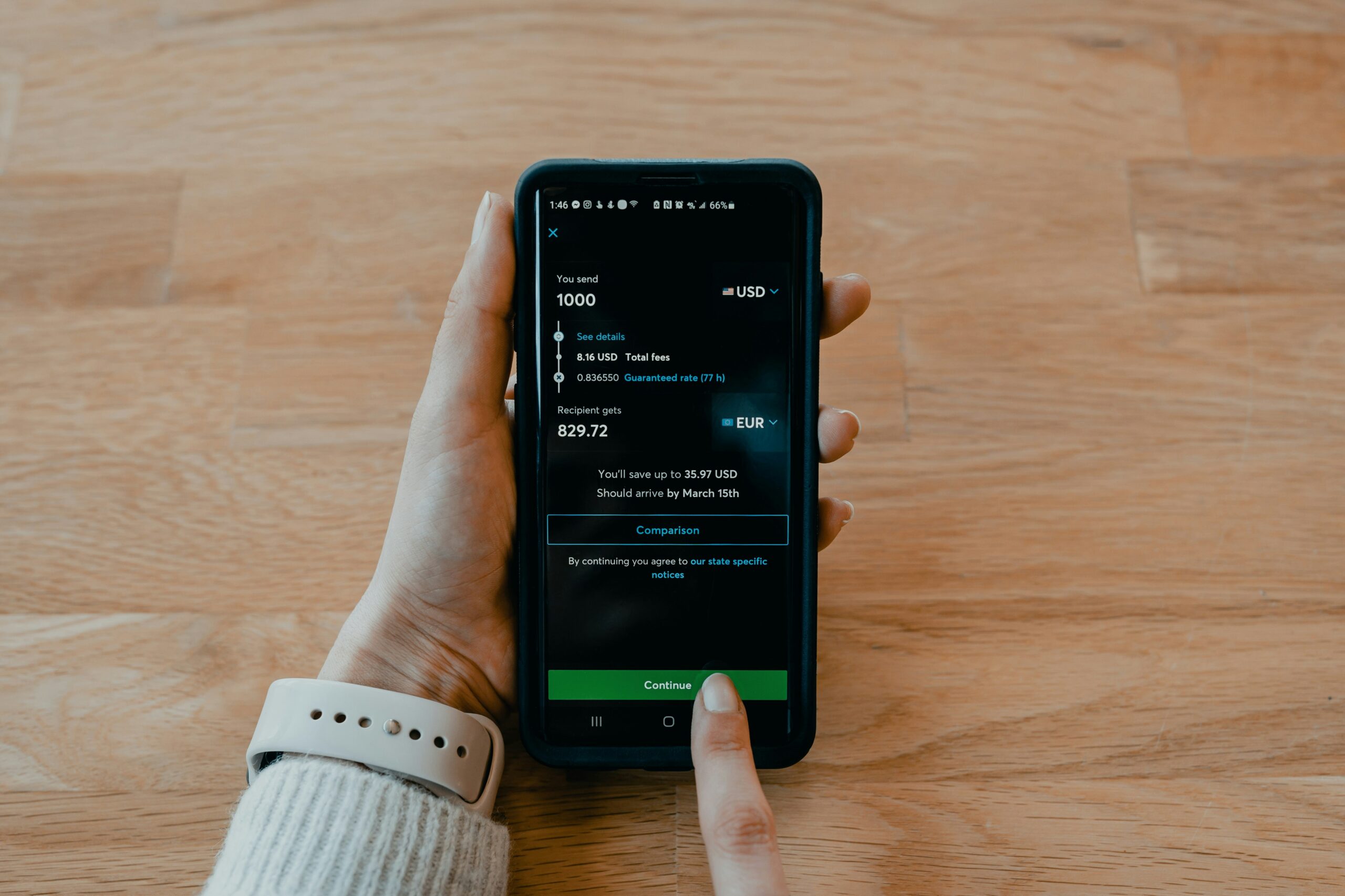Your cart is currently empty!

The Rise of Mobile Banking: Transforming Financial Services in the Digital Age
Introduction to Mobile Banking
Mobile banking refers to the utilization of mobile devices, such as smartphones and tablets, to access and manage financial services. This digital banking solution allows customers to perform a myriad of transactions, including checking account balances, transferring funds, paying bills, and even applying for loans, all from the convenience of their mobile device. The rise of mobile banking has been facilitated by advancements in technology and the growing penetration of mobile devices across the globe.
The popularity of mobile banking has surged in recent years, driven by its unparalleled convenience and accessibility. Unlike traditional banking methods that often require a visit to a physical branch, mobile banking provides 24/7 access to financial services, enabling users to manage their finances at any time and from any location. This shift towards digital solutions is not only beneficial for consumers but also advantageous for financial institutions. By embracing mobile banking, banks can reduce operational costs, improve customer satisfaction, and remain competitive in an increasingly digital marketplace.
Moreover, mobile banking’s ease of use is a significant factor contributing to its widespread adoption. With user-friendly interfaces and secure authentication methods, mobile banking apps are designed to cater to both tech-savvy users and those less familiar with digital technology. The ability to quickly and securely perform financial transactions through a mobile device has made mobile banking an essential tool for modern consumers.
As the financial industry continues to evolve, the shift towards mobile banking represents a pivotal transformation. The adoption of mobile banking solutions is not only reshaping how consumers interact with their financial institutions but also driving innovation within the industry. By providing a seamless and efficient banking experience, mobile banking is poised to be a cornerstone of the future of financial services.
History and Evolution of Mobile Banking
Mobile banking has undergone a remarkable transformation since its inception, evolving from simple SMS-based services to sophisticated, feature-rich mobile applications. The journey began in the late 1990s when banks started offering basic SMS banking services, allowing customers to check account balances and receive transaction alerts via text messages. This marked the initial step towards the mobile banking revolution.
The advent of smartphones in the early 2000s significantly accelerated the evolution of mobile banking. With the introduction of devices capable of running complex applications, banks began to develop mobile apps that offered a wider range of services. Early mobile banking apps allowed users to conduct basic transactions such as money transfers, bill payments, and account management. These apps laid the groundwork for the comprehensive mobile banking solutions we see today.
Key technological advancements have played a crucial role in shaping the mobile banking landscape. The proliferation of mobile internet and the development of secure network protocols have enabled banks to offer more secure and reliable services. The integration of biometric authentication, such as fingerprint and facial recognition, has further enhanced the security of mobile banking, making it more appealing to consumers.
In recent years, the rise of fintech companies has driven innovation in the mobile banking sector. These companies have introduced new technologies and business models, leading to the development of digital-only banks and mobile-first banking solutions. Features such as real-time notifications, instant payments, and personalized financial management tools have become standard offerings in modern mobile banking apps.
The role of smartphones in the evolution of banking services cannot be overstated. The increasing adoption of smartphones globally has made mobile banking accessible to a broader audience, including those in remote and underserved areas. As a result, mobile banking has not only transformed the way consumers interact with their banks but also contributed to financial inclusion by providing banking services to previously unbanked populations.
Overall, the history and evolution of mobile banking reflect a continuous journey of innovation and adaptation, driven by advancements in technology and changing consumer needs. From its humble beginnings with SMS banking to the sophisticated mobile apps of today, mobile banking has fundamentally transformed the financial services industry.
Key Features of Mobile Banking Apps
Mobile banking apps have revolutionized the way users interact with their financial institutions by combining convenience and efficiency. One of the core features of these apps is comprehensive account management, which allows users to view their account balances, transaction history, and statements with ease. This functionality ensures that users can keep track of their finances in real-time, without the need to visit a physical branch.
Another critical feature is the ability to perform fund transfers. Whether transferring money between accounts within the same bank or sending funds to external accounts, mobile banking apps provide a seamless and secure experience. Users can initiate transfers at their convenience, often with just a few taps on their smartphones.
Bill payment is another essential feature that simplifies financial management. Mobile banking apps allow users to schedule and pay bills directly from their accounts, eliminating the need for writing checks or visiting payment centers. This feature often includes the ability to set up automatic payments, ensuring that bills are paid on time and reducing the risk of late fees.
Mobile check deposits have also become a staple of mobile banking. By using the camera on their smartphones, users can capture images of checks and deposit them into their accounts without visiting a bank branch. This feature not only saves time but also makes banking more accessible for those who may not live near a physical location.
Personal finance management tools are increasingly integrated into mobile banking apps, providing users with insights into their spending habits and helping them manage budgets. These tools can categorize expenses, track income, and even offer financial advice, making it easier for users to achieve their financial goals.
Advanced features like biometric authentication enhance the security of mobile banking apps. By utilizing fingerprint or facial recognition technology, these apps offer a higher level of protection against unauthorized access. Additionally, real-time alerts keep users informed of account activity, such as large transactions or low balances, enabling them to react promptly to potential issues.
Integration with other financial services is another significant advantage of mobile banking apps. Users can link their accounts with various financial products, such as investment platforms and digital wallets, creating a cohesive and comprehensive financial ecosystem. This integration allows for more streamlined management of personal finances, further enhancing the user experience.
Security Measures in Mobile Banking
In the rapidly evolving landscape of mobile banking, security remains a paramount concern due to the inherent sensitivity of financial transactions. To safeguard users’ data and prevent fraudulent activities, mobile banking platforms employ a multitude of advanced security measures.
Encryption
One of the cornerstone techniques used in mobile banking security is encryption. Encryption converts data into a code to prevent unauthorized access. When a user performs a transaction, their data is encrypted using complex algorithms, such as Advanced Encryption Standard (AES) or Rivest-Shamir-Adleman (RSA). This ensures that even if data is intercepted, it remains indecipherable to unauthorized entities.
Two-Factor Authentication
Another critical security protocol is two-factor authentication (2FA). 2FA requires users to provide two forms of identification before accessing their accounts. This typically involves something the user knows (like a password) and something the user has (such as a smartphone). By adding this extra layer of security, mobile banking platforms significantly reduce the risk of unauthorized access.
Additional Security Protocols
Furthermore, mobile banking apps often utilize biometric verification methods, such as fingerprint scanning and facial recognition, to enhance security. These methods are not only more secure than traditional passwords but also increase user convenience. Additionally, many platforms implement transaction monitoring systems that use machine learning algorithms to detect and flag suspicious activities in real-time, providing an additional layer of protection.
User Tips for Enhancing Security
While mobile banking platforms employ robust security measures, users also play a crucial role in ensuring their own security. It is essential to use strong, unique passwords and to change them regularly. Users should be cautious of phishing scams, which often involve deceptive messages that appear to be from legitimate sources. Avoid clicking on suspicious links or providing personal information to unverified entities. Lastly, always keep your mobile banking app updated to benefit from the latest security enhancements.
By understanding and utilizing these security measures, users can confidently navigate the world of mobile banking, ensuring that their financial information remains protected.
Advantages of Mobile Banking
Mobile banking has revolutionized the financial services industry, offering a myriad of advantages for both consumers and financial institutions. One of the most significant benefits is the convenience of 24/7 access. Users can manage their accounts, transfer funds, pay bills, and even apply for loans at any time, without being constrained by traditional banking hours. This around-the-clock availability empowers consumers to handle their financial needs on their own schedule, making banking more accessible and user-friendly.
Another notable advantage is the ability to perform transactions from virtually anywhere. Whether you are at home, at work, or on vacation, mobile banking ensures that your bank is always at your fingertips. This geographic flexibility eliminates the need to visit physical branches, saving time and effort. It also reduces the necessity for in-person interactions, which has proven particularly beneficial during global events such as the COVID-19 pandemic.
Cost savings are another key advantage of mobile banking. Financial institutions can significantly cut down on operational costs by reducing the number of physical branches and associated expenses such as rent, utilities, and staffing. These savings can be passed on to customers in the form of lower fees and better interest rates. Additionally, the streamlined nature of mobile banking operations often leads to faster transaction processing times, enhancing overall customer satisfaction.
Mobile banking also offers personalized services and financial insights that were previously unimaginable. Advanced algorithms and data analytics allow banks to provide tailored financial advice and product recommendations based on individual spending patterns and financial goals. This level of personalization helps consumers make informed decisions and manage their finances more effectively. Moreover, features such as real-time alerts and budgeting tools enable users to monitor their accounts closely, reducing the risk of fraud and overspending.
In essence, mobile banking is transforming the financial landscape by offering unparalleled convenience, cost savings, and personalized financial management tools. This shift not only benefits consumers but also helps financial institutions stay competitive in an increasingly digital world.
Challenges and Concerns in Mobile Banking
Despite the myriad advantages that mobile banking brings, several challenges and concerns persist. One of the foremost issues is security. Mobile banking platforms are frequently targeted by cybercriminals aiming to exploit security vulnerabilities. Financial institutions must continually update their security protocols to protect sensitive user information from hacking, phishing attacks, and malware. To mitigate these risks, institutions often employ advanced encryption, multi-factor authentication, and biometric verification, though these measures can sometimes be cumbersome for users.
Another significant concern is the digital divide, which highlights the disparity between those who have access to modern technology and those who do not. Not everyone owns a smartphone or has access to reliable internet services, which limits the reach of mobile banking. This divide can be particularly pronounced in rural areas and among lower-income populations, thereby restricting their ability to benefit from digital financial services. Bridging this gap is crucial for ensuring that mobile banking can serve a broader demographic.
User trust is also a critical factor. Despite the convenience and efficiency of mobile banking, some users remain skeptical about the safety and reliability of conducting financial transactions via mobile devices. This skepticism can stem from a lack of understanding of how the technology works or from previous negative experiences. Financial institutions must therefore focus on educating their customers about the safety measures in place and continually work to build and maintain trust.
Furthermore, financial institutions face the ongoing challenge of keeping up with rapidly changing technology. The pace of innovation in the mobile banking sector necessitates continuous investment in new technologies and the updating of existing systems. This can be resource-intensive and requires financial institutions to balance innovation with cost-effectiveness. Additionally, they must navigate complex regulatory requirements that vary across different regions and jurisdictions, ensuring compliance while fostering innovation.
In summary, while mobile banking offers significant benefits, addressing these challenges is essential for its continued growth and success. Security, the digital divide, user trust, and the rapid pace of technological change and regulatory requirements are key areas that require ongoing attention and investment from financial institutions.
The Future of Mobile Banking
As mobile banking continues to gain traction, the future of this transformative financial service promises to be shaped by several key innovations and trends. One of the most significant drivers of change is the integration of artificial intelligence (AI) and machine learning (ML). These technologies are enhancing user experiences by providing personalized financial advice, detecting fraudulent activities, and automating customer service through chatbots and virtual assistants. The ability of AI and ML to analyze vast amounts of data and predict user behavior is setting the stage for a more intuitive and responsive banking experience.
Another trend reshaping mobile banking is the burgeoning influence of fintech companies. These agile and innovative firms are disrupting traditional banking models by offering specialized services that cater to niche markets. From peer-to-peer lending platforms to digital wallets, fintech companies are leveraging mobile technology to provide financial services that are more accessible, convenient, and cost-effective. Their rise is compelling traditional banks to innovate and adapt, fostering a more competitive and dynamic financial ecosystem.
Blockchain technology also holds immense potential for the future of mobile banking. By enabling secure, transparent, and decentralized transactions, blockchain can significantly reduce the risk of fraud and increase the efficiency of cross-border payments. The implementation of smart contracts—self-executing contracts with the terms directly written into code—can further streamline various banking processes, from loan approvals to asset transfers. As blockchain technology matures, its integration into mobile banking platforms could revolutionize the way financial transactions are conducted.
Looking ahead, mobile banking is poised to continue evolving, driven by advancements in technology and changing customer expectations. The emphasis will likely be on improving security measures, enhancing user experiences, and offering more personalized services. The convergence of AI, fintech innovation, and blockchain technology will not only transform mobile banking but also have a profound impact on the entire financial industry, making it more efficient, inclusive, and customer-centric. As these trends unfold, the financial landscape will be reshaped in ways that are both exciting and transformative.
Conclusion
Mobile banking has undeniably revolutionized the financial services industry, offering a level of convenience and accessibility that was previously unimaginable. Through the extensive use of smartphones and mobile applications, individuals can now manage their finances effortlessly from virtually anywhere. This transformation has not only simplified daily banking activities but has also paved the way for innovative financial solutions and services.
One of the key benefits of mobile banking is its ability to provide real-time access to financial information. Users can monitor transactions, transfer funds, pay bills, and even deposit checks with just a few taps on their mobile devices. This level of immediacy and control over personal finances contributes significantly to improved financial management and decision-making.
For financial institutions, mobile banking represents a cost-effective way to reach a broader audience while enhancing customer satisfaction. By leveraging mobile technology, banks can offer personalized services, streamline operations, and reduce the need for physical branches. This shift not only lowers operational costs but also meets the growing demand for digital-first banking experiences.
However, as mobile banking continues to evolve, it is crucial for both users and institutions to stay informed about emerging security measures. Ensuring the protection of sensitive financial data is paramount. Users should be vigilant about adopting best practices, such as using strong passwords, enabling two-factor authentication, and regularly updating their mobile banking apps. Financial institutions, on the other hand, must continually invest in advanced security technologies to safeguard user information against cyber threats.
Looking ahead, the future of mobile banking promises even more advancements. From the integration of artificial intelligence and machine learning to the rise of blockchain technology, the possibilities are endless. Staying abreast of these trends will enable users to fully leverage the benefits of mobile banking while ensuring their financial information remains secure.
In conclusion, mobile banking stands as a testament to the transformative power of technology in the financial sector. Its benefits are far-reaching, offering unparalleled convenience and efficiency. By remaining vigilant about security and informed about future developments, users and institutions alike can confidently navigate the evolving landscape of mobile banking.
Recent Posts
- Mastering Budgeting with Irregular Income: A Comprehensive Guide

- How to Deal with Budget Busters: A Comprehensive Guide

- Mastering the Art of Managing Impulse Purchases: A Comprehensive Guide

- Mastering Your Finances with the 50/30/20 Budgeting Rule

- Budgeting for Clothing: A Comprehensive Guide to Smart Shopping

Categories
Archive
Tags
budget-friendly transportation budgeting Budgeting Tips Clothing Budgeting cost-saving tips Digital Finance Dining Out eco-friendly commuting economics Economic Trends Emergency Fund entertainment expenses ESG Investing financial crisis Financial Independence Financial Management Financial Planning Fintech flexible jobs freelance work Future of Work gig economy Grocery Budgeting higher education Impact Investing Impulse Buying inflation Interest Rates Investing Basics Investment Strategies Irregular Income Market Volatility Meal Planning money management Personal Finance Remote Work Retirement Planning Risk Management Shopping Habits Smart Shopping student loans Sustainable Finance Sustainable Lifestyle Technology workplace productivity

